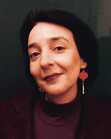First and final

“And the Big Bang has a sound ̶ it is the final static that can never quite be removed ̶ so the universe itself (this universe anyway) can be imagined as noise, as residue, unexpected by-product, and the last sound will also be the first.”
Paul Hegarty, Noise/Music. A History
Finally, I could put some serious thought on my fascination with noise, not so much as a genre (which, thanks to this book, I discovered I’m not particularly fond of) but more as a concept and philosophical construct. I won’t deny I deeply enjoy pop/rock music, especially when good lyrics and good voice are both involved, but I also realized that is not what listening really is about, and Hegarty’s book confirmed some of my ideas about listening as both a form of self-discipline and an opening towards the infinite possibilities of sound and its displacement, dissipation, elasticity, revelation, alteration, shock, breaking down of all barriers between the I/eye and the Other, the individual and society. As a “serious listener” (to quote a term mentioned in the book), I tend to do with music (read electronica, mainly in its experimental and dark ambient forms), what I do with writing: exploring sounds and searching for ways to expand dimensions and psychic awareness, until the divide between what I am listening to (writing) and who I am temporarily comes undone and eventually falls. It may not happen all the times, because it is compelling, challenging, and it does require a lot of time and effort (as writing does). Yet my listening often becomes a learning on how to feel micro variations or sudden flares as part of the world’s heartbeat, not as mere interference or static. Hegarty doesn’t mention this is his book, probably because it is focused on noise also a musical genre and not simply as a philosophical possibility; yet I’ve come to the conclusion that, in order for the listening to be effective and “serious”, it needs to be isolated from the rest of the human world. In other words, serious listening can only be possible in solitude, possibly because (and this indeed is mentioned in the book) noise is characterized by isolationism and antisocial tendencies, though being also concerned with a freeing of the mind and body from ego and its drives. What’s left is a poetics of the interstice, a residue of resonance within and without perception. We’re always told we live in a visual age, yet I’ve always found aural signals more timeless than visual ones, because they can liberate from the shackles of social bonds, individual wholeness and all sorts of hierarchies. By listening, you can become formless and hyperlinked, asexual and plurisexual, nihilistic and utopian at the same time, fluid in the endless stream of the space universe whose first and final breath will never be removed.



